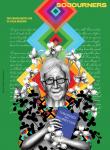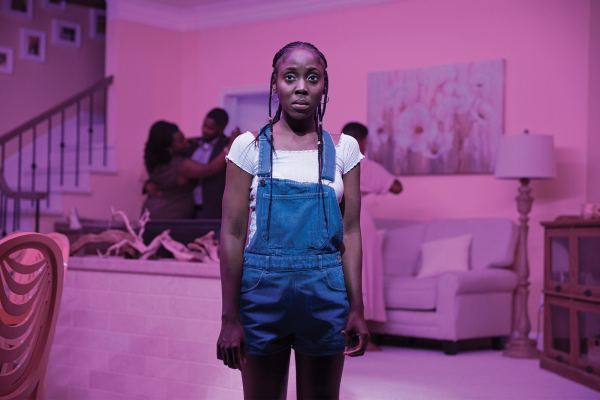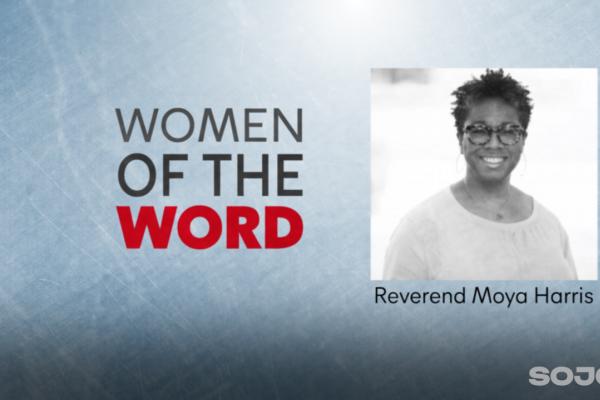AT THE END of Jackie Sibblies Drury’s landmark drama “Fairview,” the audience faces a deep and enduring question: “Are we able to look through another’s eyes? Or are we merely reflecting on what we’re willing, what we want to see?” To bring us to the point where we’re able to make this query, Drury takes us on a ride through a landscape of African American theatrical tropes, sometimes familiar and sometimes unsettling, so that we are better able to face ourselves, as discomforting as that is.
The beginning seems fairly rote, as a family gets ready for a birthday party in an immaculately white living room. We could be in the home of the Huxtables, chuckling along with the laugh track. Beverly, the perfectionist mother who wishes for everything to be just right for Grandma’s celebration, hovers over all, brushing on the finishing touches.
But, if you look and listen closely, there are cracks that begin to show: the odd wavering of the soundtrack and teenage daughter Keisha turning to address the audience in a moment of Brechtian shock. Then we find that we are not seeing TV-perfect domestic bliss. Keisha comments on the beautiful perfection and longing for her bright future, standing at its threshold, just waiting to seize the day. And then she thinks aloud, “Something, yes, something is keeping me from what I could be. And that something. It thinks that it has made me who I am.”
As these words of warning hang in the air, Drury has many more theatrical tricks in store. This is no American comedy classic that will resolve itself in three acts: This play is one of the most reflexive and biting commentaries on the state of race politics in the U.S. to date. Watching with pleasure is no longer allowed. We are asked to take part in the conversation, not as judge or jury, but as the new object of study.
Broadway audiences are largely white, and, according to the Asian American Performers Action Coalition’s study released last year, 86.8 percent of Broadway and off-Broadway plays produced in the 2016-17 season were written by white playwrights, 87.1 percent of the season’s directors were white, and only 33 percent of roles that season went to nonwhite actors. In the final moments of “Fairview,” when we are asked to confront ourselves and why we like certain stories and images as opposed to others, we realize there is no such thing as fairness in the American theater.
“Fairview” is playing in 2020 at more than 50 regional theaters across the U.S. See it when you are able, and enter into its fairer view.

Got something to say about what you're reading? We value your feedback!





